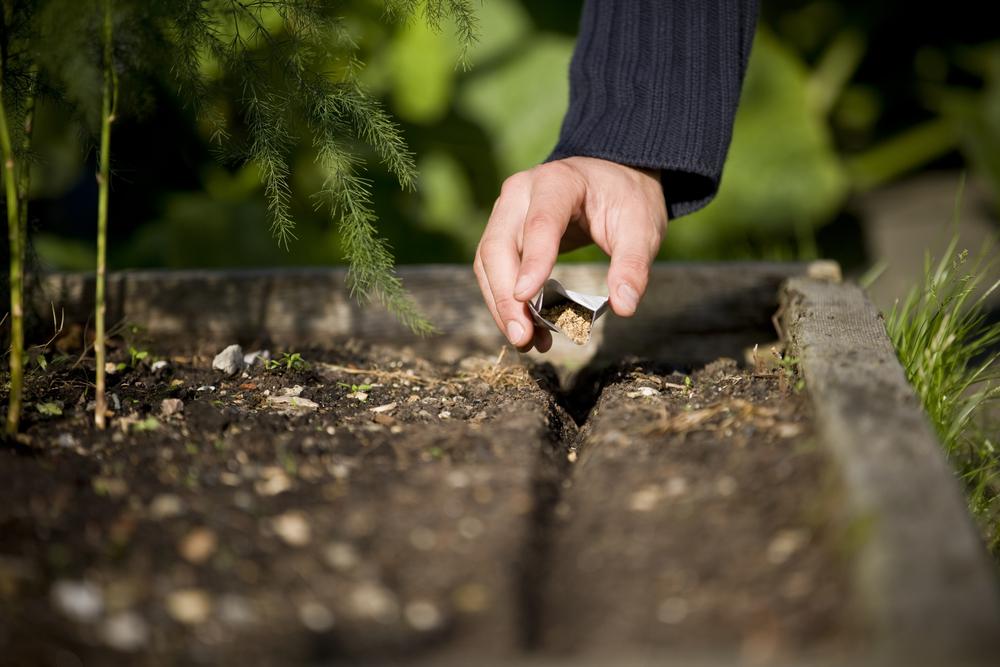
August in vegetable beds: Harvesting, sowing and watering
Article
If you took good care of the vegetables (and you wished the weather), you have your hands full now. You can harvest tomatoes, cucumbers and peppers, but also garlic or onions. You can also enjoy the first carrots and of course zucchini. The pumpkins are also round, but they still need time. The herbs bloom, so cut them in dry weather. When you enjoy the harvest enough, get back to work. The vegetable garden also needs you in August.
The beds give crops even in winter. What to sow right now?
Grow Chinese cabbage. It's that easy!
Sow even in the second half of summer
Sowing is not just the prerogative of spring. Even in the second month of the holidays, you can stock up on seeds, prepare rows and sow. Now is the time for winter onions, radishes, salads, turnips, cornflowers or arugula. You will have your own supply of greenery at the end of autumn.
Some seedlings can also come to the flower beds. If you fell asleep in this regard, take a look at gardening, ask the neighbors. In August, fennel, broccoli, Chinese or Chinese cabbage are planted. If you want to extend the strawberry bed, the end of the holidays is the ideal time.
If you do not want to sow new vegetables, then cover the beds with mulch , such as cut grass. This will prevent the arbitrary growth of weeds and will maintain a pleasant microclimate in the soil, which will welcome beneficial soil organisms.

Take care of the tomatoes
If the weather is good, tomatoes give one fruit after another. At the same time, however, they are still growing, flourishing, planting new fruits, which, however, may no longer have enough time to ripen and will only deplete the plant (the time from flowering to ripening of the fruit lasts about two months). Therefore, carefully prune the leaves and remove the flowers that the plant is planting right now.
Also put the lower leaves of the plant away and pinch the side shoots , they break easily by hand (do not use a knife to avoid accidentally cutting the plant). Also outweigh the plant if necessary. It should still have solid support. Especially if it is full of fruit and could bend.
Continue watering the tomatoes regularly. Always pour water directly to the roots, leave the leaves out of the watering, otherwise they could catch mold more easily. But everything in moderation. If you water too much, the fruits of the tomatoes will start to crack when ripe. Adjust the watering according to the weather, if it is dry and sunny, add water, if it is wet summer, remove the water.
What about excess tomatoes? Freeze, boil, dry
Take an interest in pumpkins
Pumpkins already have nice fruits, but so far they are still green, immature. Check the plant regularly and throw away rotten pieces. Also pay attention to whether the leaves do not catch mold, then there would be white spots on them and it is better to pull out the infested plants.
But don't be fooled. It can also be a false mildew! This then stains appear on old and withered leaves, which just need to be carefully removed. Real mold creates stains similar to scattered flour.
What to do if aphids and mildew rage in your garden
In addition to leaves, focus on the fruits. Place a cutting board, old tile or brick under each one so that it does not come into direct contact with the ground. This will protect it from mold.
Baked pumpkin with herb dip
From one pot: Chicken with pumpkin, chickpeas and bacon
Water with raincoat
The second half of the holidays are usually sunny and, unlike in July, the rains are decreasing. But this is not always the case. Therefore, monitor the weather and irrigate as needed. Tomatoes, pumpkins, zucchini or cucumbers need more water, they drink a lot in the hot summer. On the other hand, you don't have to water almost onions and garlic - if you haven't harvested them before.
It is best to use rainwater for watering, just put barrels under the eaves and make a supply. Water either early in the morning or late in the evening, when the sun no longer washes, so the water does not evaporate so quickly and the plants make better use of it.
Collect seeds
Some plants have already flowered and are producing seeds. This applies to dill, peas or licorice or African. You can grow all these herbs and flowers together with vegetables. Collect ripe seeds in dry weather and store in a closed container. They will come in handy again next year.
Shade-loving vegetables. What will grow beautifully in the shade?
ynezorPumanzeSaNyknalC






